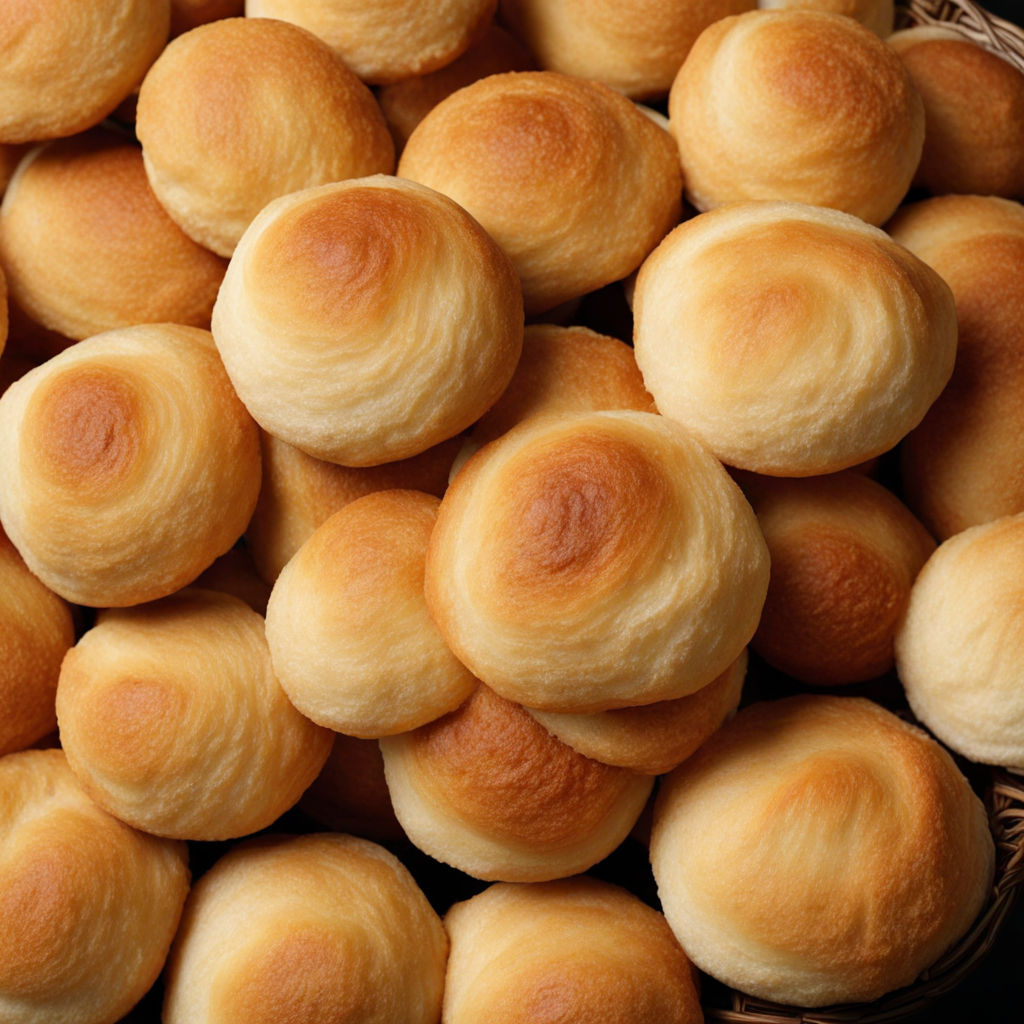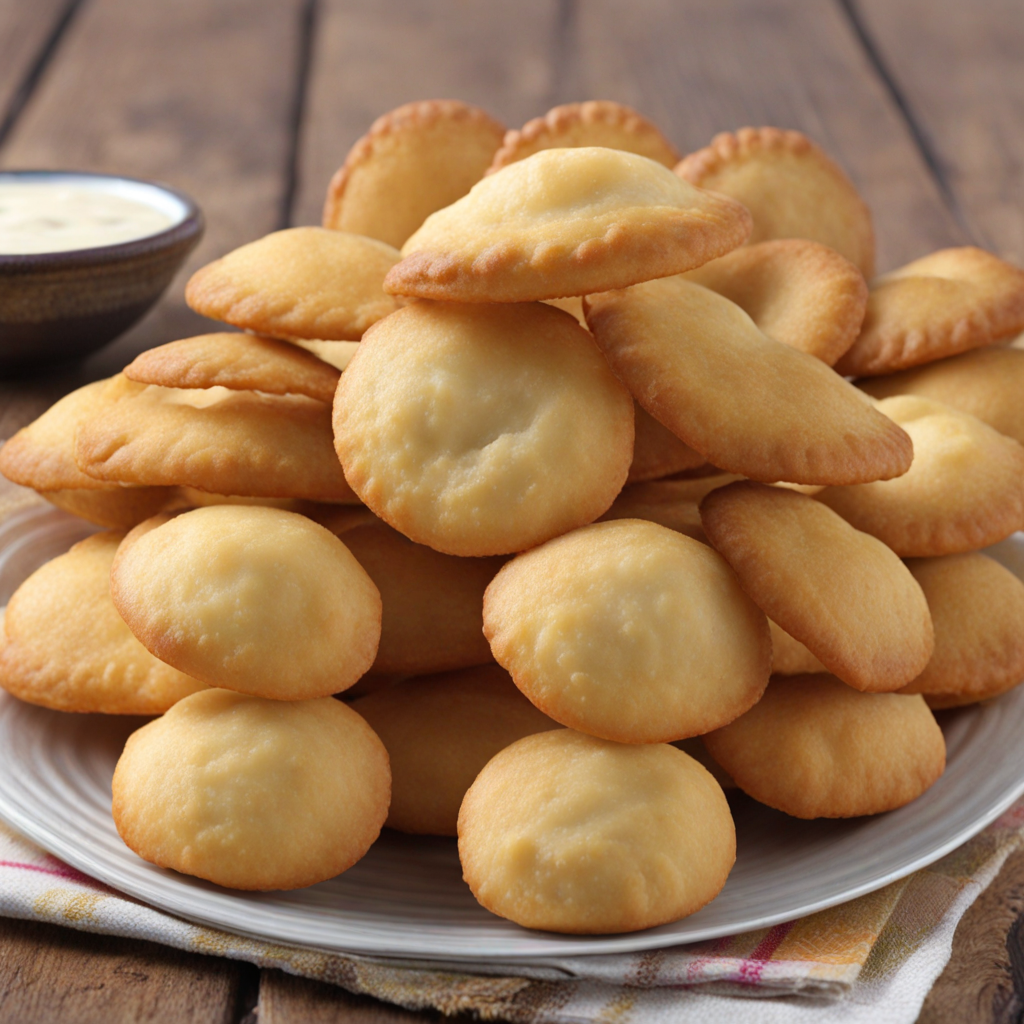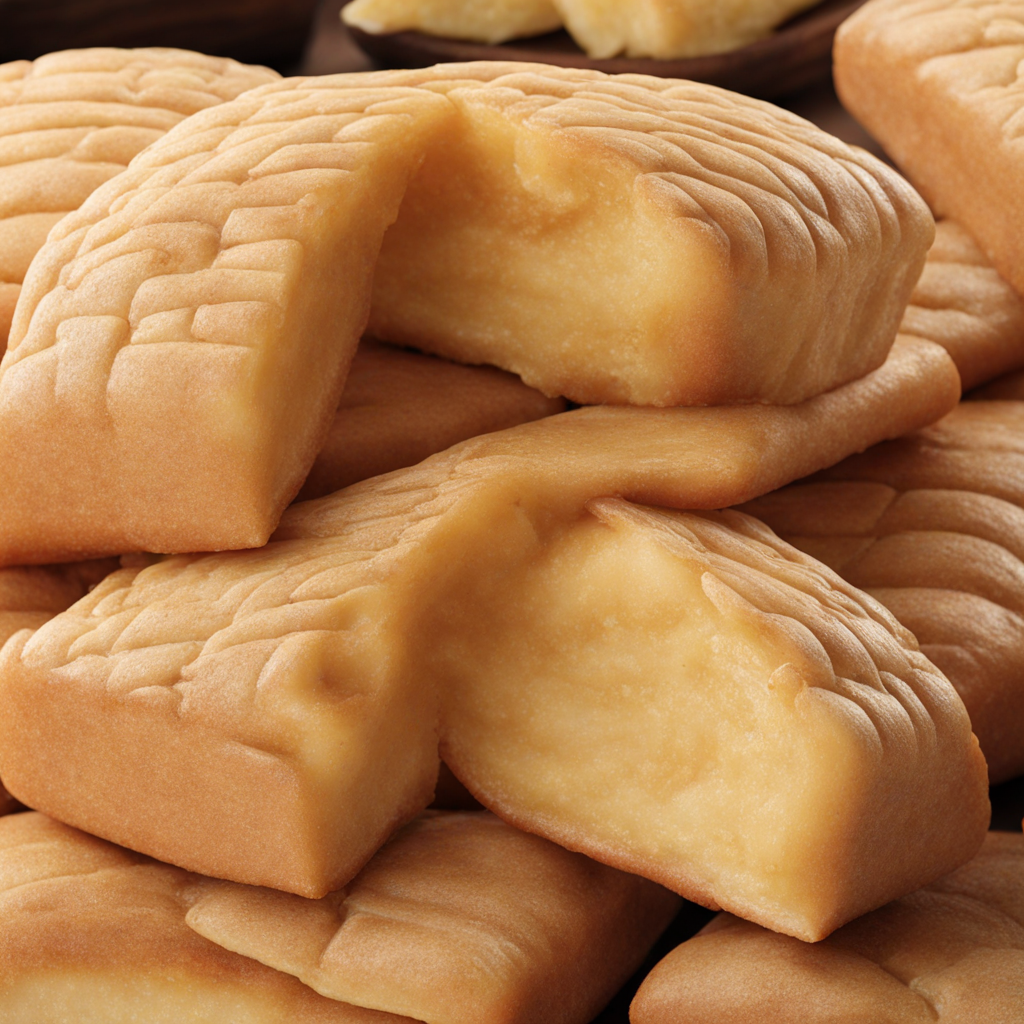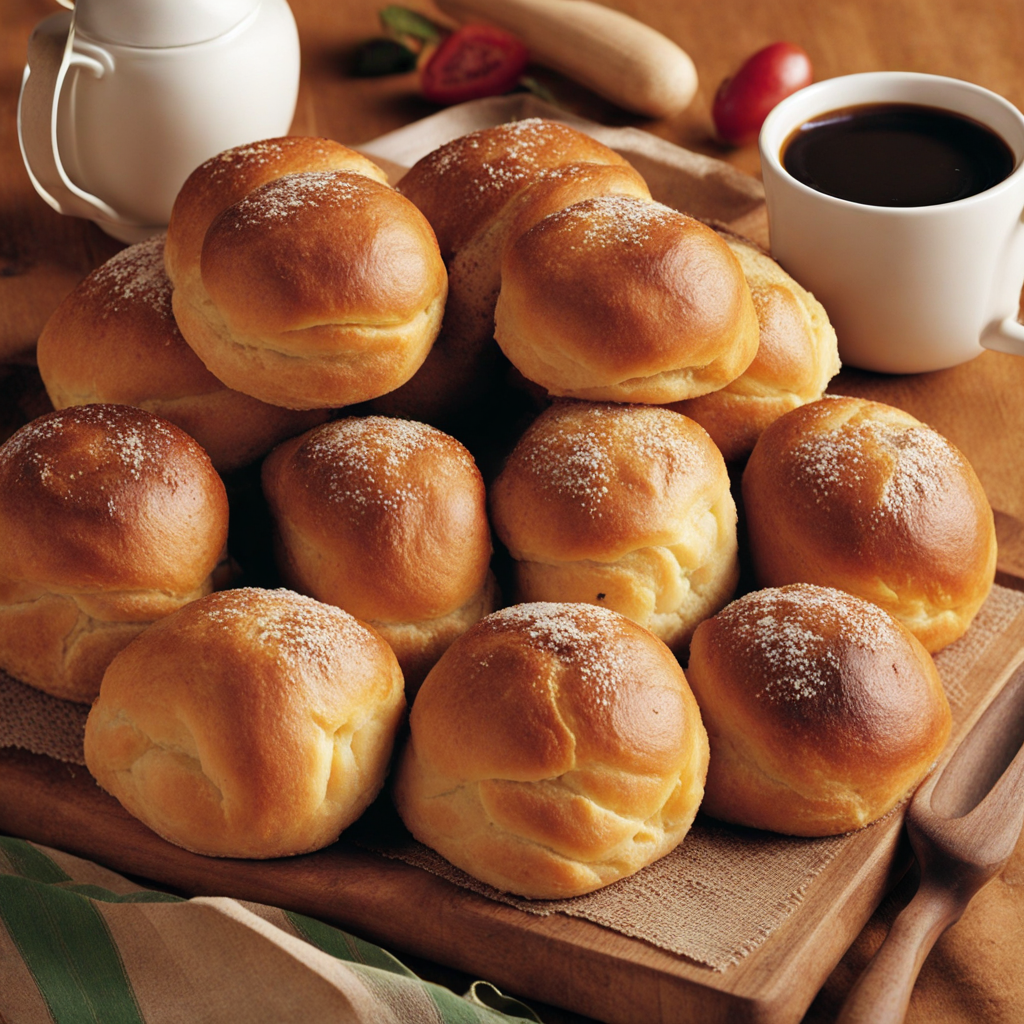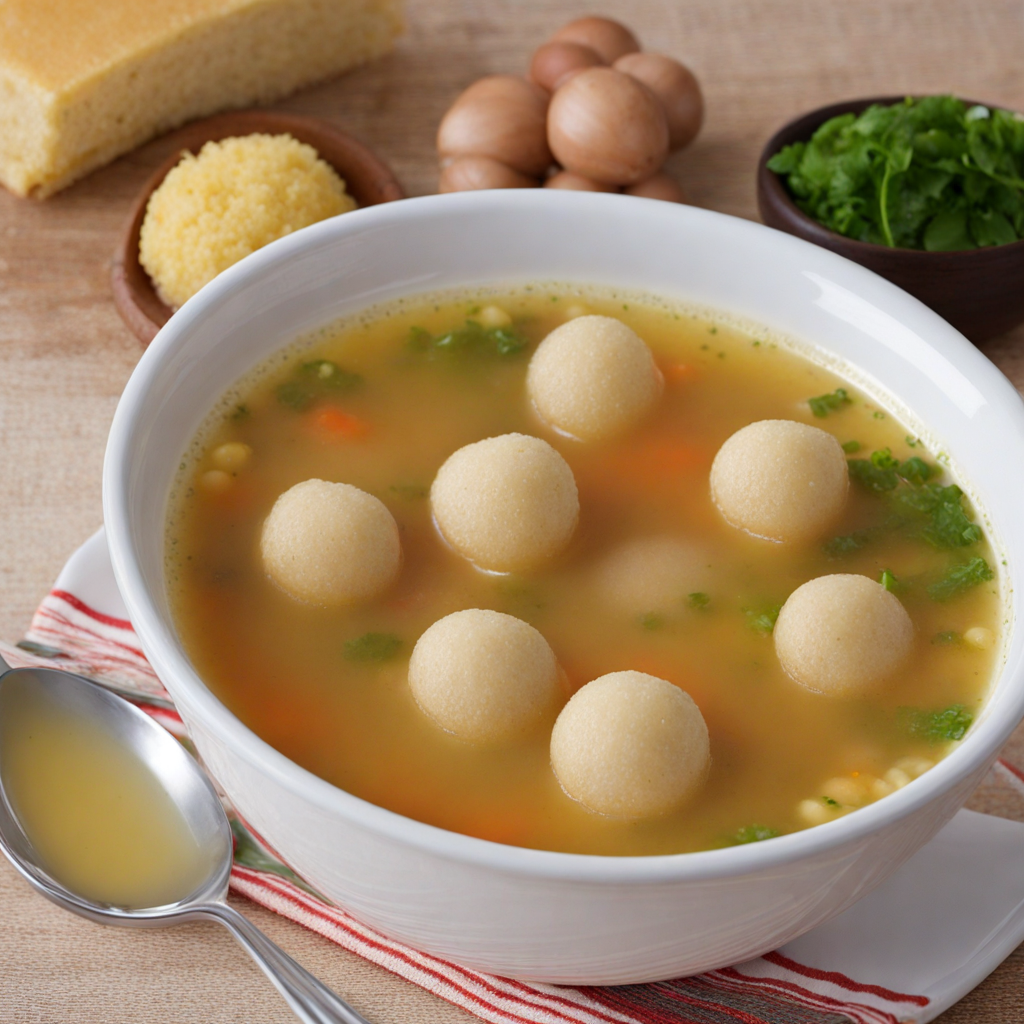Chipa Poshõ
Chipa Poshõ is a traditional Paraguayan dish that exemplifies the rich culinary heritage of the region. This delightful snack, often enjoyed during festive occasions and family gatherings, is a variant of the more widely known chipa, which is a type of cheese bread. Chipa Poshõ, however, stands out due to its unique preparation and texture, which incorporates a steaming process that results in a moist and flavorful bread-like dish. The history of Chipa Poshõ is deeply rooted in the indigenous Guaraní culture, which has significantly influenced Paraguayan cuisine. The Guaraní people utilized cassava, or manioc, as a staple in their diet, and this ingredient remains central to Chipa Poshõ. The dish also reflects the Spanish colonial influence, particularly through the incorporation of cheese, which has become a fundamental component of many Paraguayan foods. Over time, Chipa Poshõ has evolved into a beloved comfort food, often associated with community and celebration. The flavor profile of Chipa Poshõ is a delightful combination of savory and slightly nutty notes, primarily owing to the use of cassava flour and cheese. The dish is typically made with a mixture of grated cheese, often a local variety called "queso Paraguay," which is known for its mild flavor and excellent melting properties. The cheese contributes a rich creaminess that balances beautifully with the subtle earthiness of the cassava. Additionally, the inclusion of eggs and milk enhances the overall taste, creating a
How It Became This Dish
The Culinary Heritage of Chipa Poshõ: A Journey Through Paraguay’s Gastronomic Landscape #### Origins of Chipa Poshõ Chipa Poshõ, a traditional Paraguayan dish, is a delightful representation of the country's rich culinary tapestry, woven from indigenous traditions and colonial influences. Its name derives from the Guarani language, an official language of Paraguay alongside Spanish. "Chipa" relates to a type of bread or baked good, while "Poshõ" means "soft" or "moist," reflecting the dish's unique texture. The origins of Chipa Poshõ can be traced back to the indigenous Guarani people, who were the original inhabitants of the region long before European colonization. These early inhabitants utilized local ingredients like manioc (cassava) and corn, which were staples of their diet. The Guarani method of preparing food involved grinding these ingredients into flour and combining them with water, which laid the groundwork for the development of various types of bread-like products, including chipa. With the arrival of Spanish colonizers in the 16th century, new ingredients such as cheese and eggs were introduced to the Guarani culinary repertoire. This fusion of indigenous and European elements was pivotal in the evolution of Chipa Poshõ, giving it the distinct characteristics we recognize today. The incorporation of cheese, particularly the local Paraguayan cheese known as "queso Paraguay," transformed the texture and flavor of the dish, making it richer and more appealing to a broader audience. #### Cultural Significance Chipa Poshõ holds a special place in Paraguayan culture, often celebrated during festivals, religious ceremonies, and family gatherings. It is particularly associated with the Holy Week (Semana Santa) when families prepare large quantities of the dish to share among relatives and friends. This communal aspect of preparation and consumption fosters a sense of unity and connection, reflecting the strong social fabric of Paraguayan life. Moreover, Chipa Poshõ is more than just food; it is a symbol of national identity. The dish encapsulates the essence of Paraguay's culinary heritage, representing a blend of indigenous traditions and European influences. It has become a source of pride for Paraguayans, often featured in cultural events and gastronomic festivals that showcase traditional foods. In contemporary Paraguay, Chipa Poshõ is commonly sold by street vendors and in local bakeries, making it accessible to people from all walks of life. It is often enjoyed as a snack or breakfast item, paired with tereré, a traditional herbal tea that is a staple of Paraguayan social life. The dish’s popularity has transcended regional boundaries, with variations found in neighboring countries such as Argentina and Brazil. #### The Evolution of Chipa Poshõ Over the centuries, Chipa Poshõ has undergone considerable development, adapting to both regional tastes and the availability of ingredients. The basic recipe consists of manioc flour, cheese, eggs, and milk, which are mixed to form a dough. The dough is then shaped into small rounds or flattened discs before being baked to a golden perfection. In the 20th century, as Paraguay experienced economic changes and urbanization, variations of Chipa Poshõ began to emerge. For instance, some cooks started adding different types of cheese, incorporating herbs and spices, or even including vegetables to enhance the nutritional value of the dish. These adaptations have allowed Chipa Poshõ to remain relevant in a rapidly changing culinary landscape while still honoring its traditional roots. In addition to ingredient modifications, the methods of preparation have also evolved. While traditional Chipa Poshõ was often baked in clay ovens, modern variations can be found in home kitchens with conventional ovens, making the dish more accessible to everyday cooks. This shift has also led to the emergence of ready-to-eat Chipa Poshõ sold in supermarkets, catering to the busy lifestyles of urban dwellers. #### A Global Perspective As globalization continues to influence culinary practices worldwide, Chipa Poshõ has begun to gain recognition beyond Paraguay's borders. Food enthusiasts and chefs are increasingly interested in traditional and regional cuisines, resulting in a growing appreciation for dishes like Chipa Poshõ. International food festivals, cooking shows, and social media platforms have provided a stage for this beloved dish, allowing it to reach audiences far and wide. Chefs and home cooks alike have experimented with Chipa Poshõ, introducing contemporary twists that reflect global culinary trends. For instance, some have tried gluten-free versions using alternative flours, while others have explored fusion variations that incorporate flavors from Asian or Mediterranean cuisines. This creative experimentation continues to celebrate the dish's adaptability while keeping its cultural significance intact. #### Conclusion Chipa Poshõ is more than just a simple bread; it is a culinary artifact that embodies the history, culture, and identity of Paraguay. Its origins in indigenous traditions and colonial influences speak to a rich past, while its evolution and adaptability highlight a vibrant present and future. As Paraguayans gather to enjoy this dish, they not only savor its delightful flavors but also partake in a shared heritage that connects generations. In the global culinary scene, Chipa Poshõ serves as a reminder of the importance of preserving traditional foods while embracing innovation. It is a dish that continues to evolve, inviting new interpretations while remaining deeply rooted in its historical context. As more people discover the magic of Chipa Poshõ, it stands poised to become a beloved delicacy on the world stage, a testament to the enduring power of food as a medium for cultural expression.
You may like
Discover local flavors from Paraguay


